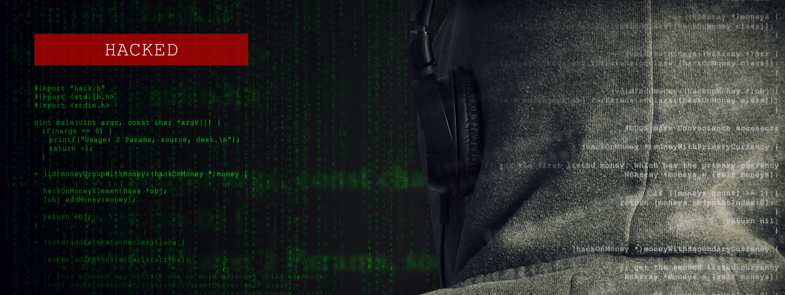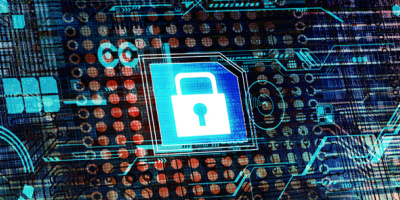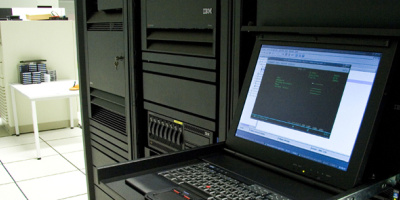Carol discusses why and how staying up to date reduces your company’s security risk.
You might wonder why I decided to discuss this particular issue. I chose this topic because, as I read about how breaches occur—that is, how hackers are able to penetrate organizations—in many instances, it’s due to organizations not staying current.
Equipment remains with default credentials or is running an old operating system or is left unpatched—even when there are known vulnerabilities. Hackers will “drive by” or may go explicitly looking to exploit servers with known vulnerabilities.
That got me thinking about how this might apply to the IBM i world. While you might not be able to prevent hackers from attacking your organization, not staying current may leave you unable to respond to requests that require new technology or may leave you scrambling when something breaks and the resolution is not in the current operating system. Or you may simply not be taking advantage of some of the cool technologies IBM’s provided us. Let’s look at some examples.
Access Client Solutions (ACS): The Replacement for Client Access
Although IBM has been telling us for several years now that Client Access is not supported on Windows 10, many organizations have still made no plans for moving off Client Access for Windows and moving to Access Client Solutions. Some organizations are using Client Access on Windows 10 successfully. But I’ve only seen that work in the most basic cases. And even then, there’s nothing that says that a Microsoft patch won’t come out and break that functionality. What will happen then? You’ll be scrambling to deploy ACS. Better to start planning your ACS deployment now.
Continuing with the topic of ACS, if you haven’t kept up to date with the latest versions of ACS, you’ve missed that you can now use Application Administration to control some aspects of ACS as well as to take advantage of new database functions, enhancements to Run SQL Scripts, and other new functionality. To download ACS and obtain a high-level description of the enhancements for each version, click here.
Operating System
Whatever OS you’re running—be it IBM i, AIX, or some flavor of Linux—it’s wise to stay on the most current version. Why? Because it’s more likely you can meet your organization’s technology requirements if you’re on the most recent version. For example, we see many clients running IBM i V7R1. While IBM has not yet announced End of Life (EoL) for V7R1, I wish they would. The technology is so old, especially when it comes to implementing secure (encrypted) communications, that many organizations are having a difficult time implementing the stronger, more secure protocol—TLS1.2. In V7R1, Digital Certificate Manager (DCM) allows only one digital certificate to be assigned per server. Beginning in V7R2, multiple certificates can be assigned, making it easier to transition to and use the stronger protocols, yet allowing the weaker protocols as necessary while organizations with whom you’re communicating work on upgrading their own technology.
Besides making it difficult to implement the TLS1.2 protocol, you’re missing out on the auditing enhancements and the addition of Row and Column Access Control (RCAC) in V7R2 and even more auditing enhancements and the powerful Authority Collection feature, both added in V7R3.
Technology Refreshes (TRs)
Rather than packing all new enhancements into a traditional operating system release, IBM is now using Technology Refreshes to provide us with new functionality. The benefits of not having to wait for a release cycle to get new functionality is huge. But because they aren’t a full release, they don’t get quite the fanfare of a traditional release, so you should pay attention to publications such as this one to make sure you understand what (all) IBM has included in each TR. Click here to see what IBM has provided in each TR.
My favorite enhancements include the updates and enhancements to the views in QSYS2, especially the USER_INFO view, which now includes the list of supplemental groups, and AUTHORIZATION_LIST_INFO, which includes the list of objects secured by an authorization list.
Technology Refreshes are what make TLS 1.1 and TLS 1.2 enablement possible on V7R1. If you are not on TR6, TLS1.1 and TLS1.2 aren’t even available at V7R1. And it’s not available at all on previous releases. We’ve had clients be notified by their banks that they must be using TLS1.2 exclusively in just a short period of time (as in weeks, not months). If they had not already been running V7R1 and the most current TR, they would have first had to get current before they could proceed with their TLS 1.2 implementation. An OS upgrade would have been required had they been running V5R4 or V6R1!
Fixes/Patches/PTFs
I don’t care what you call them, organizations need to be current with fixes. Many organizations have a fix policy that requires they are down one level of PTFs (or Microsoft patches) from the most current. That’s fine as long as there’s a process in place to keep that N-1 status and you don’t get further behind.
However, I assert that, for hiper and integrity PTFs, you want the most current version. To stay current with PTFs and get notified when a critical security PTF is released, sign up for notifications using your IBM ID at https://www.ibm.com/support/mynotifications. Other areas for which you want to ensure you’re current? Java and anything to do with web technology and open source.
Circling back to using IBM i Access for Windows: If you want to make your connections using TLS1.2 or TLS1.2, you must be at Service Pack SI50567 or higher. For organizations that have a requirement that all communications use these stronger protocols, this is something to be aware of and plan for.
Many of you stay current by applying the latest (or N-1) group PTFs. Determining if you’re on the most recent group PTFs is incredibly easy when you’re on V7R2/R3. Simply run an SQL SELECT statement on the SYSTOOLS.GROUP_PTF_CURRENCY view. The result will be a listing of what’s currently installed and the most recent group PTFs.
Stay Current So Fixes Don’t Break Things
Recently, a security PTF was released that disabled encryption ciphers that were deemed to be weak and, therefore, created vulnerabilities. Many organizations weren’t prepared for this change because they’re still using these old and weak ciphers, so they didn’t apply the PTF. But surprise! The PTF was included in a group PTF, and it was applied anyway. Some organizations had processes break and had to re-enable this cipher. My point is this: If these organizations had not been using this old, weak, and vulnerable cipher, this PTF could have been applied without issue. In fact, you probably would have welcomed the fact that this technology was being disabled because it’s one of those protocols that those intending to do harm could exploit.
Summary
While I realize that it takes time to stay current, I believe it’s a key part of reducing the risk to your organization’s security posture and, very specifically, the risk to your data. I encourage you to invest the time to stay current—not just for items relating to IBM i, but for all of your technology.


























 More than ever, there is a demand for IT to deliver innovation. Your IBM i has been an essential part of your business operations for years. However, your organization may struggle to maintain the current system and implement new projects. The thousands of customers we've worked with and surveyed state that expectations regarding the digital footprint and vision of the company are not aligned with the current IT environment.
More than ever, there is a demand for IT to deliver innovation. Your IBM i has been an essential part of your business operations for years. However, your organization may struggle to maintain the current system and implement new projects. The thousands of customers we've worked with and surveyed state that expectations regarding the digital footprint and vision of the company are not aligned with the current IT environment. TRY the one package that solves all your document design and printing challenges on all your platforms. Produce bar code labels, electronic forms, ad hoc reports, and RFID tags – without programming! MarkMagic is the only document design and print solution that combines report writing, WYSIWYG label and forms design, and conditional printing in one integrated product. Make sure your data survives when catastrophe hits. Request your trial now! Request Now.
TRY the one package that solves all your document design and printing challenges on all your platforms. Produce bar code labels, electronic forms, ad hoc reports, and RFID tags – without programming! MarkMagic is the only document design and print solution that combines report writing, WYSIWYG label and forms design, and conditional printing in one integrated product. Make sure your data survives when catastrophe hits. Request your trial now! Request Now. Forms of ransomware has been around for over 30 years, and with more and more organizations suffering attacks each year, it continues to endure. What has made ransomware such a durable threat and what is the best way to combat it? In order to prevent ransomware, organizations must first understand how it works.
Forms of ransomware has been around for over 30 years, and with more and more organizations suffering attacks each year, it continues to endure. What has made ransomware such a durable threat and what is the best way to combat it? In order to prevent ransomware, organizations must first understand how it works. Disaster protection is vital to every business. Yet, it often consists of patched together procedures that are prone to error. From automatic backups to data encryption to media management, Robot automates the routine (yet often complex) tasks of iSeries backup and recovery, saving you time and money and making the process safer and more reliable. Automate your backups with the Robot Backup and Recovery Solution. Key features include:
Disaster protection is vital to every business. Yet, it often consists of patched together procedures that are prone to error. From automatic backups to data encryption to media management, Robot automates the routine (yet often complex) tasks of iSeries backup and recovery, saving you time and money and making the process safer and more reliable. Automate your backups with the Robot Backup and Recovery Solution. Key features include: Business users want new applications now. Market and regulatory pressures require faster application updates and delivery into production. Your IBM i developers may be approaching retirement, and you see no sure way to fill their positions with experienced developers. In addition, you may be caught between maintaining your existing applications and the uncertainty of moving to something new.
Business users want new applications now. Market and regulatory pressures require faster application updates and delivery into production. Your IBM i developers may be approaching retirement, and you see no sure way to fill their positions with experienced developers. In addition, you may be caught between maintaining your existing applications and the uncertainty of moving to something new. IT managers hoping to find new IBM i talent are discovering that the pool of experienced RPG programmers and operators or administrators with intimate knowledge of the operating system and the applications that run on it is small. This begs the question: How will you manage the platform that supports such a big part of your business? This guide offers strategies and software suggestions to help you plan IT staffing and resources and smooth the transition after your AS/400 talent retires. Read on to learn:
IT managers hoping to find new IBM i talent are discovering that the pool of experienced RPG programmers and operators or administrators with intimate knowledge of the operating system and the applications that run on it is small. This begs the question: How will you manage the platform that supports such a big part of your business? This guide offers strategies and software suggestions to help you plan IT staffing and resources and smooth the transition after your AS/400 talent retires. Read on to learn:
LATEST COMMENTS
MC Press Online